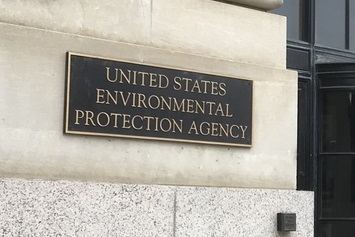The EPA’s commitment to regulatory reform through deregulation is evident in the Agency’s latest Regulatory Agenda. The 145 entries on the Agency’s Fall 2019 Rule List include 56 actions that are expected to be deregulatory; these actions follow the 47 deregulatory amendments the EPA says it has already finalized under President Donald Trump.
The president has repeatedly made it clear that environmental protection as effected by the federal government will not occur at a high cost to economic growth and energy independence (see, for example, Executive Order 13783, Promoting Energy Independence and Economic Growth).
37 Planned Actions for 2020
Rulemaking listed on the Agenda, as well as other nonregulatory initiatives such as grant and education programs, “will be undertaken with a strong commitment to science, law, and transparency,” the EPA says in a Statement of Priorities the Agency issued with the Agenda. The Statement lists 37 actions the EPA plans to propose or complete in 2020. The majority of these priorities are clearly intended to continue the administration’s deregulatory trend. In its news release describing the Statement of Priorities, the Agency called special attention to three deregulatory rulemakings:
- Revised definition of waters of the United States (WOTUS) (Step 2). Step 1 in this Clean Water Act (CWA) rulemaking withdrew the Obama EPA’s definition of WOTUS, which the Agency and the Army Corps of Engineers now assert deviated from Congressional intentions in the CWA. Step 2 would step down that definition by ensuring that the states have the authority to manage their water resources without federal interference.
- Oil and gas New Source Performance Standards (NSPS). The intent here is to propose and finalize amendments to the Agency’s 2016 Clean Air Act (CAA) NSPS for the oil and gas (O&G) sector. That action was written to reduce emissions of methane and volatile organic compounds from new, reconstructed, and modified sources in the sector.
- Updating regulations for water quality certifications. Any applicant for a federal license or permit to conduct an activity that may result in a discharge to navigable waters must obtain from the state in which the discharge would originate certification that the discharge will comply with the state’s applicable water quality requirements. Stakeholders have complained that states unreasonably denied certifications, have been slow in issuing certifications, or have conditioned certification on the applicant taking actions that are apart from water quality. The Agency’s existing proposal is intended to remove these obstacles to permitting, particularly for energy infrastructure projects.
Other Priorities
Among other CAA deregulatory priorities for 2020, the EPA intends to amend the National Emissions Standards for Hazardous Air Pollutants from coal- and oil-fired electric utility steam generating units and define a major modification under the New Source Review program.
The Agency is also planning to revise the process it uses when reviewing (and potentially vetoing) dredge and fill permits the Army Corps of Engineers issues under CWA Section 404.
In addition, the Statement of Priorities includes several new regulatory items for 2020. One CAA action would increase the stringency of nitrogen oxides (NOx) emissions standards for on-highway heavy-duty trucks. Perhaps the broadest regulatory changes would affect per- and polyfluoroalkyl substances (PFAS), a family of chemicals used in many products. The Agency says it plans to designate two PFAS—perfluorooctanoic acid (PFOA) and perfluorooctanesulfonic acid (PFOS)—as hazardous substances under the Comprehensive Environmental Response, Compensation, and Liability Act (CERCLA). The EPA is also considering adding certain PFAS to the list of chemicals that must be reported to the Toxics Release Inventory (TRI) Program under the Emergency Planning and Community Right-to-Know Act (EPCRA) section 313. Furthermore, the Agency is working to finalize a Significant New Use Rule (SNUR) under section 5(a) of the Toxic Substances Control Act for PFOA or its salts.
Finally, the EPA says it aims to improve its technical assistance and outreach for small businesses with the goals of minimizing regulatory burdens and simplifying small businesses’ participation in voluntary programs.

